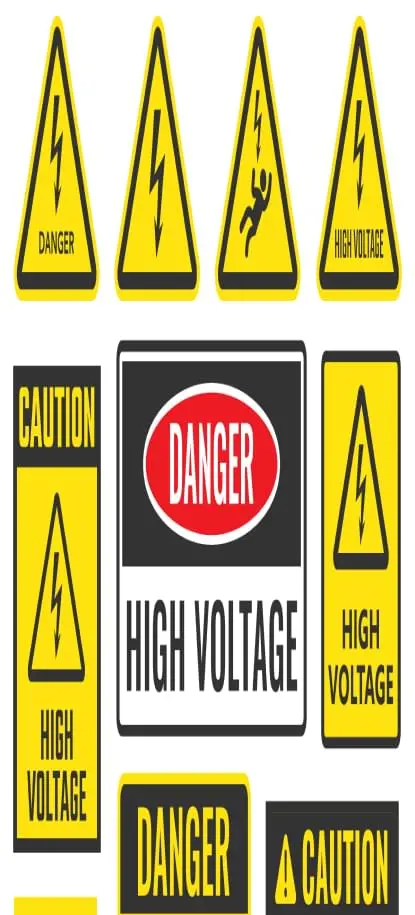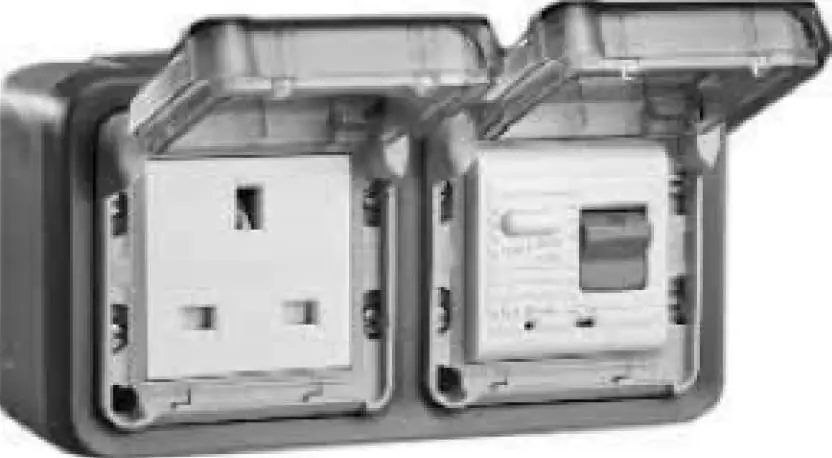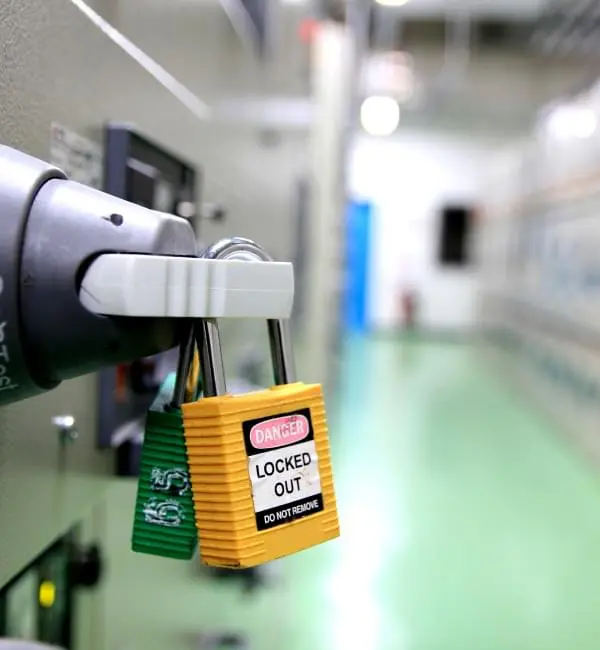




Quick Links:


Electricity is a safe and reliable energy source; but, like any other type of energy, it can be hazardous if not used with caution. We rely on electricity, but sometimes underestimate its capability of causing injury. The information presented on this page is available to ensure that you have the adequate information to stay safe around electrical hazards. Electrical safety training resources are also provided in this page. Please contact hse@kaust.edu.sa for more details and information.
KAUST electrical supply is 220V, 60Hz, single phase or 380V,
60Hz three phase.
Due to some changes in the regulation during the construction of
KAUST, we have a mix of EU and UK type plugs across campus and
the community.
The major hazards associated with electricity are electrical shock, fire and arc flash. Electrical shock occurs when the body becomes part of the electric circuit, either when an individual comes in contact with both wires of an electrical circuit, one wire of an energized circuit and the ground, or a metallic part that has become energized by contact with an electrical conductor.
The severity and effects of an electrical shock depend on a number of factors, such as the pathway through the body, the amount of current, the length of time of the exposure, and whether the skin is wet or dry. Water is a great conductor of electricity, allowing current to flow more easily in wet conditions and through wet skin.
The effect of the shock may range from a slight tingle to severe burns to cardiac arrest. Electrocution refers to the injury or lethal dose of electrical energy. Electricity can also cause forceful muscle contraction or falls. The severity of injury depends on the amount of current flowing through the body, the current's path through the body, the length of time the body remains in the circuit and the current's frequency.
The table below shows the general relationship between the degree of injury and the amount of amperage for a 60-cycle hand-to-foot path of one second's duration of shock.
| Current | Reaction |
|---|---|
| 1 Milliampere | Preception level. Just a faint tingle. |
| 5 Milliampere | Slight shock felt. Average individual can let go. However, strong involuntary reactions to shocks in this range can lead to injuries. |
| 6-30 Milliampere | Painful shock. Muscular control lost. |
| 50 - 150 Milliampere | Extreme pain, respiratory arrest, severe muscular contractions. Individual cannot let go. Death is possible. |
| 1,000 - 4,300 Milliampere | Ventricular fibrillation. Muscular contraction and nerve damage occur. Death is most likely. |
| 10,000 Milliamperes | Cardiac arrest, severe burns and probable death |
The so-called low voltages can be extremely dangerous because current can be high and effect described in the table above may occur, with all other factors being equal, the degree of injury is proportional to the length of time the body is in the circuit - low voltage does not mean low hazard.
Too much current running through wiring where overcurrent protection fails or does not exist
Faulty electrical outlets resulting in poor contact or the the formation of an electric arc.
Poor wiring connections and old wiring that is damaged and cannot support the load
Small kids often want to explore new things by putting them in their mouths. Keep cords away from little hands and mouths.
Check all your cords. Replace frayed cords; tape wonʼt protect anyone from a shock. Only use extension cords temporarily. They are prone to cracking and fraying, which can lead to a shock or fire.
Teach older children how to plug and unplug safely. When itʼs time to unplug, donʼt yank cords from the wall. This can damage the appliance, the cord and the outlet.
Never overload outlets by plugging in too many cords.
Install tamper-resistant receptacles to protect younger children from shocks. They have special shutters that cover the plug slots and help prevent little fingers or objects from going into the outlet.
If your outlet has a missing or broken cover plate, replace it immediately. Outlet covers create a barrier between people and exposed wires. Contact 959 or fmcallcenter@kaust.edu.sa to report these situations.
If an electric appliance or outlet smells, is hot or buzzes, donʼt touch it or try to unplug it. Turn off the electricity at the circuit breaker, and then unplug it. Report major sparks, buzzes or burn signs to 959 or fmcallcenter@kaust.edu.sa.
Water and electricity can be a lethal mix. Never reach for or unplug an appliance that has fallen into water. Instead, turn the power off at the breaker before you unplug the appliance or remove it from the water.
Use approved power strips and adapter available at Tamimi Supermarket. Check at the Customer Service Counter.

Electrically powered equipment, such as hot plates, stirrers, vacuum pumps, electrophoresis apparatus, lasers, heating mantles, ultrasonicators, power supplies, and microwave ovens are essential elements of many laboratories. These devices can pose a significant hazard to laboratory users, particularly when mishandled or not maintained. Many laboratory electrical devices have high voltage or high power requirements, carrying even more risk. Large capacitors found in many laser flash lamps and other systems are capable of storing lethal amounts of electrical energy and pose a serious danger even if the power source has been disconnected.
De-energization of electrical equipment provides the highest level of safety when servicing or maintaining electrical equipment.
For lab modifications to install additional outlets or industrial plugs please raise a FM modifications request:LINK
For equipment maintenance, report electrical equipment issues please contactLEM@KAUST.edu.sa Please report any near miss and incidents usingReportIt.
All activity is controlled by HSE Permit to Work procedure.
Lab users can expect a notification/announcement from the Building Management Team prior to the impact.
Building Management team will specify the panel/s affected.
The lab team can check the sockets affected in the lab by following the labelling.
Any unlabeled sockets require reporting via 959
Sockets which are on backup power are labelled BPL or BPH
It is suggested that equipment is unplugged if possible prior to the
shutdown
If in doubt, the lab team can reach out to Building Management team for support.
After the works, and plugging the equipment back in, there is circuit trip, immediately contact 959

For a comprehensive overview of basic electrical safety and things to consider while working with and around electricity and electrical equipment, HSE has developed an online course for Electrical Safety in Research Laboratories. This training course has the objective to familiarize researchers, post docs, faculty, staff and students with basic electricity concepts. Participants will learn about the most common electricity hazards, how to work safely, and actions to take in case of emergency. This course can be found in the SALUTE. Make sure to log in before in SALUTE to access the training link:Electrical Safety in Research Training in SALUTE
Department Managers are accountable for:
Control electrical safety work in line with task specific Permit to Work, task specific risk assessment and method statement.
Appoint an authorized subject matter expert for electrical safety to develop and maintain electrical safety rules in line with internationally recognized standards and local legislation.
Use only authorized persons to work on electrical equipment and to carry out assigned work.
Use equipment or work instructions that control static electricity to prevent discharge or arc flash that could harm people or damage equipment.
Control work on or near electrical equipment and provide safe isolation.
Sockets which are on backup power are labell Control electrical work in design and construction.

To prevent electrical hazards, always make sure equipment is properly grounded. Electrical grounding provides an alternate path for electricity to follow, rather than going through a person. Equipment with a grounding prong must be plugged into an extension cord with a ground; the grounding plug should not be removed from the equipment.


When servicing and maintenance tasks involve electricity and electrical equipment, you must prevent the unexpected startup of equipment. More information on lockout/tagout procedures is available on the SOP Isolation, Lockout & use of hold tags process.

Ground Fault Circuit Interrupters protect users of electrically-powered tools and equipment from electrical shocks, especially when working in wet environments.
Being used at locations where employees are likely to get in contact with water or conductive liquids such as: outdoors, bathrooms, kitchens, or any other area with potential exposure to water;
Being used at construction or renovation sites; or
Being used for portable lighting in wet or other conductive locations (such as inside boilers or tanks).

NFPA 70E addresses electrical safety-related work practices for employee workplaces that are necessary for the practical safeguarding of employees relative to the hazards associated with electrical energy during activities such as:
If you see a person being electrocuted, DO NOT TOUCH THEM! The electricity can go through you, too.

Electrical burns vary in severity depending upon: (1) how long the body is in contact with the electric current; (2) the strength of the current; (3) the type of current; and (4) the direction the current takes through the body. Often these burns are deep. There may be more than one area burned.
One area may be where the current entered the body and another may be where it left. Electrical burn wounds may look minor on the outside, but could be severe on the inside.
If a person has received an electrical burn, check for shock and follow the steps outlined above. If the person is conscious and there are no signs of shock (such as being cold, clammy, pale and having a rapid pulse), begin treating the burned area. Do not apply grease or oil to the burn. Cover the burn with a dry, sterile dressing, but do not cool the burn. Keep the victim from getting chilled. Seek medical attention as soon as possible.